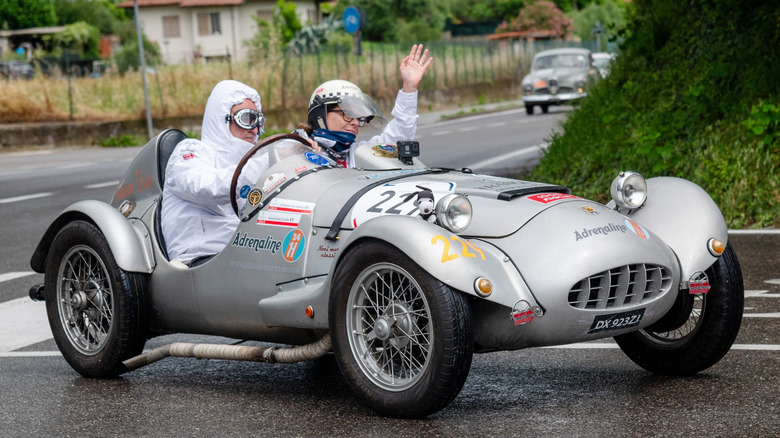The first American sports car of the postwar era was not the Corvette that Lucifer drives in the TV show. It was a car that came along in 1949, four years before the Chevrolet Corvette first appeared on the scene. That car is the Crosley Hotshot, which was created by America’s Crosley Motors, Inc. This company had been making very small economy cars since the 1939 model year and noticed the postwar surge in imported sports car sales. Powel Crosby, one of the company’s owners, owned a 1948 Jaguar XK120. His experience with this British sports car, combined with Crosley’s excellent sales record in 1948, led Powel and his brother Lewis to pull the trigger on a sports car variant of their economy car. That car would be named the Hotshot.
Advertisement
The Hotshot was extremely basic, featuring cutouts in the sides instead of doors that let you step into the car. The later 1950 Super Sports model had operating doors included. There was no trunk lid because there was no trunk — the spare tire was simply bolted to the rear deck. The initial list price was $849 at the Crosley Hotshot’s 1949 release, increasing to $924 in 1951. During the Hotshot’s production run from 1949 to 1952, a total of 2,498 examples of this diminutive sports car were made, and that includes Hotshot, Super Hotshot, and Super Sports versions.
What were the specs of the Crosley Hotshot?
The Crosley Hotshot started with a frame that was five inches longer than other Crosley models, giving it a wheelbase of 85 inches. The Hotshot was powered by a new 724cc or 44 cubic inch inline four cylinder engine with a cast iron block assembly, mounted in a front mid-engine position, meaning that it was placed behind the car’s front axle. The Hotshot’s overhead camshaft engine produced 26 horsepower and became known for its durability, thanks to its five-bearing crankshaft design. The CIBA engine was a great improvement over Crosley’s previous sheet metal engine.
Advertisement
The engine drove the rear wheels by way of a Warner three-speed manual transmission and a Spicer differential. Suspension was handled by semi-elliptic leaf springs in front, with six leaf springs on the left and five of them on the right, and both coil and leaf springs in the rear. The Hotshot had seven inches of ground clearance and rolled on 12-inch wheels, with a hydraulic shock installed at each wheel.
The Crosley Hotshot, which weighed less than 1,200 pounds, could reach 60 mph in around 20 seconds, with a top speed of 73 mph or so in testing done at that time. Advanced disc brakes derived from aircraft practice was used at first, but the brakes corroded due to road salt in winter climates and the brakes were switched back to conventional, trouble-free Bendix brakes later on.
Advertisement
The Crosley Hotshot had some successes in racing competition
The Crosley Hotshot achieved some notable racing successes, both as a complete car and as an engine donor for other racing cars. The Hotshot’s most notable win was in the inaugural 1950 six-hour Sam Collier Memorial Grand Prix of Endurance, which later evolved into The 12 Hours of Sebring race. The following year, Hotshot racers got second-place podium finishes in races held in Switzerland and Japan. A Crosley Hotshot that was entered into the 1951 24 Hours of Le Mans race would have likely won its class, if not for a generator failure before the finish. During the early 1950s, Crosley Hotshots reigned supreme in the SCCA’s H-modified class for 750cc-powered race cars, claiming victories in 10 out of 12 races held on the West Coast.
Advertisement
The Crosley Hotshot’s engine was also used to great effect as a power source for other race cars. The image above shows a Crosley-powered 1953 Bandini 750 Sport Siluro racer competing in the 2024 Mille Miglia race in Italy. Four of these tube-chassis cars, built by Ilario Bandini, competed in the actual 1953 Mille Miglia, with the one piloted by Massimo Bondi finishing ninth in the 750cc class. The car was later exported to the U.S., where it continued its competition career into the 1960s.




.png?tr=w-1200%2Cfo-auto&w=150&resize=150,150&ssl=1)




